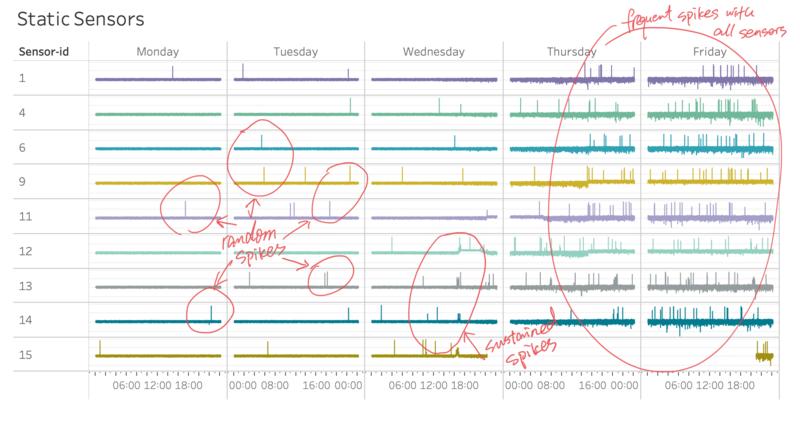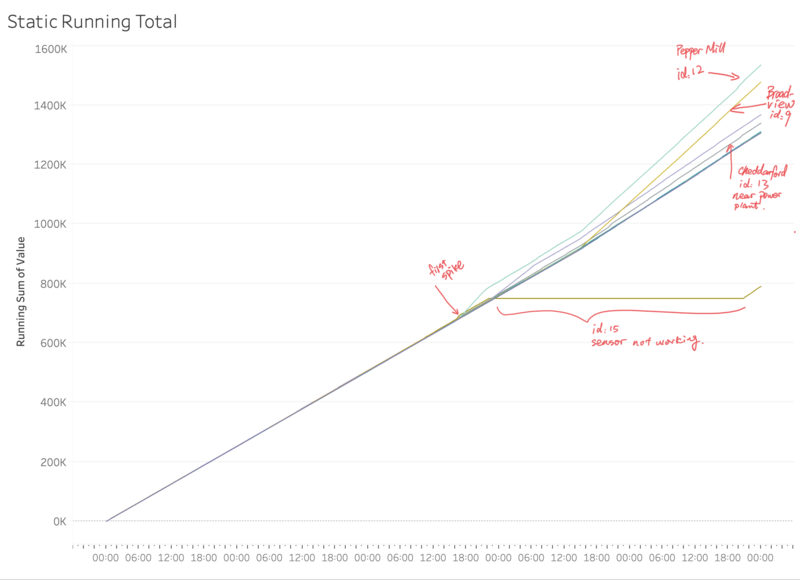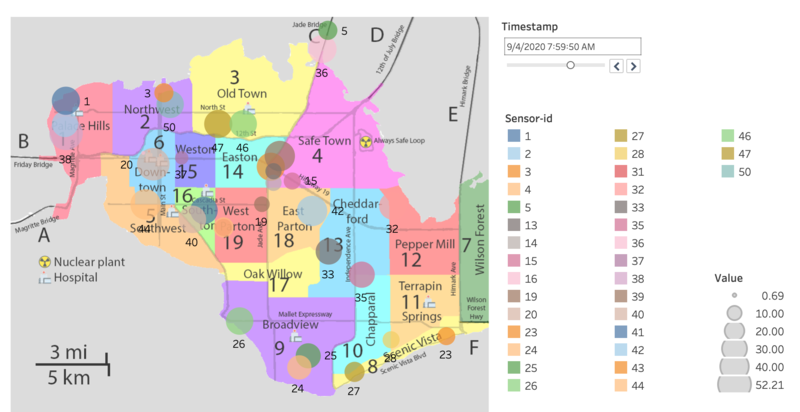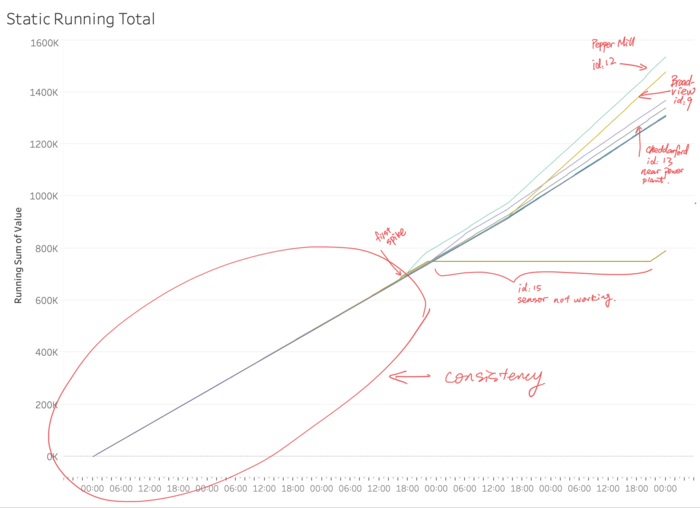IS428 AY2019-20T1 Assign He Yicheng: Observations
Question 1
Visualize radiation measurements over time from both static and mobile sensors to identify areas where radiation over background is detected. Characterize changes over time.
Before Wednesday afternoon, the static sensors’ readings remained calm with some random spikes from time to time. There were signs of more frequent reading spikes from sensors 12, 13, 14 and 15. Sensor 12, near the Power Plant shows ever increasing readings from 18:00 onwards. This is followed by increased readings at sensor 11 (Broadview Community Hospital) and Sensor 9 (Broadview). Sensor 15 (Weston) stopped working after 22:06 on Wednesday.
The graph above shows the mobile sensor readings on Thursday at 7:59. From the graph, we can see big bubbles such as Sensor 39, 42, 33 and 35 which surround the Power Plant. Surprisingly, Sensor 1, which is far away from the plant, is having a reading as high as those sensors that are closer to the plant.
Question 2
2a. Compare uncertainty of the Static sensor to the Mobile sensor. What anomalies can you see? Are there sensors that are too uncertain to trust?
For the static sensors, the sensors are generally consistent in the readings. However, Sensor 15 stopped working from Wednesday 22:00 to Friday 21:00. Despite the random spikes from time to time, the overall readings from all sensors seem in sync. From the running total graph above, we can see the ultimate consistency of readings across all the static sensors from Monday to Evening of Wednesday. Afterwards, readings from sensor 12 and 11 and 9 started to raise faster than rest sensors, standing out in the running total graph. Interestingly, sensor is relatively far from the plant yet having readings that grow faster than many other sensors.
For the mobile sensors, it is obvious to spot the huge inconsistency across the 50 sensors with many irregular readings as well as missing readings.
Take the sensor 5 and 6 as an example. From the graph above, we can spot obvious differences in their patterns.
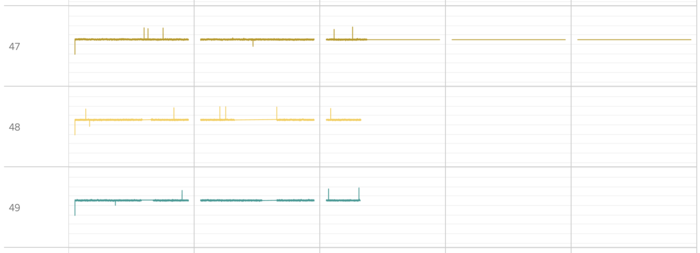



The graphs above shows that those sensors have missing readings with unknown reasons.
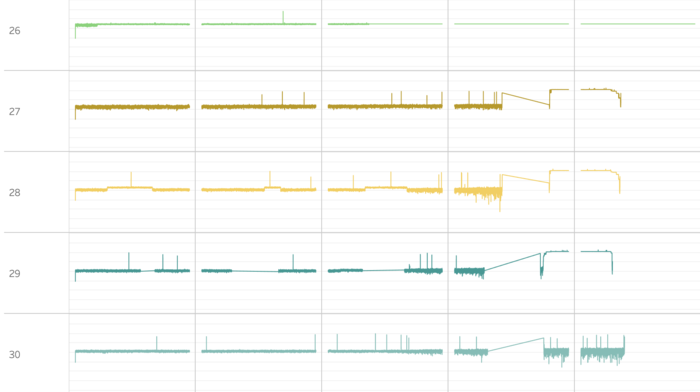
Sensor 27, 28 and 29 have similar consistent readings.

Sensor 18 has one of the most irregular readings with many pauses of readings across the week.
Question 3
Given the uncertainty you observed in question 2, are the radiation measurements reliable enough to locate areas of concern?
Question 4
Summarize the state of radiation measurements at the end of the available period. Use your novel visualizations and analysis approaches to suggest a course of action for the city. Use visual analytics to compare the static sensor network to the mobile sensor network. What are the strengths and weaknesses of each approach? How do they support each other?
Question 5
The data for this challenge can be analyzed either as a static collection or as a dynamic stream of data, as it would occur in a real emergency. Describe how you analyzed the data - as a static collection or a stream. How do you think this choice affected your analysis? Limit your response to 200 words and 3 images.

